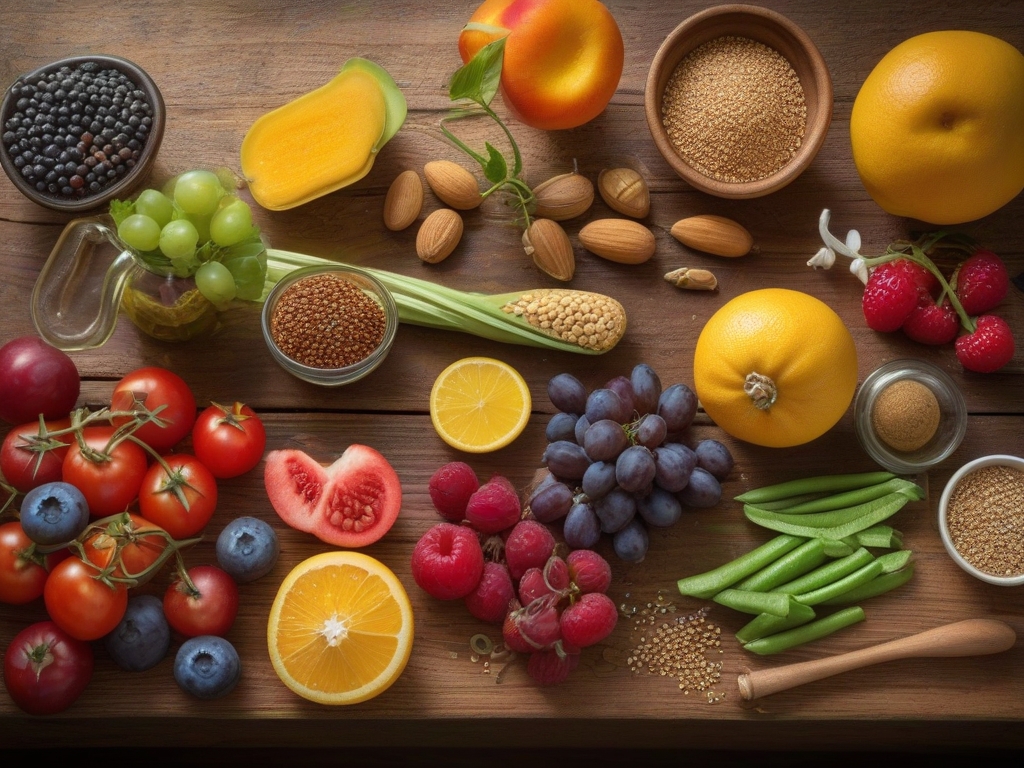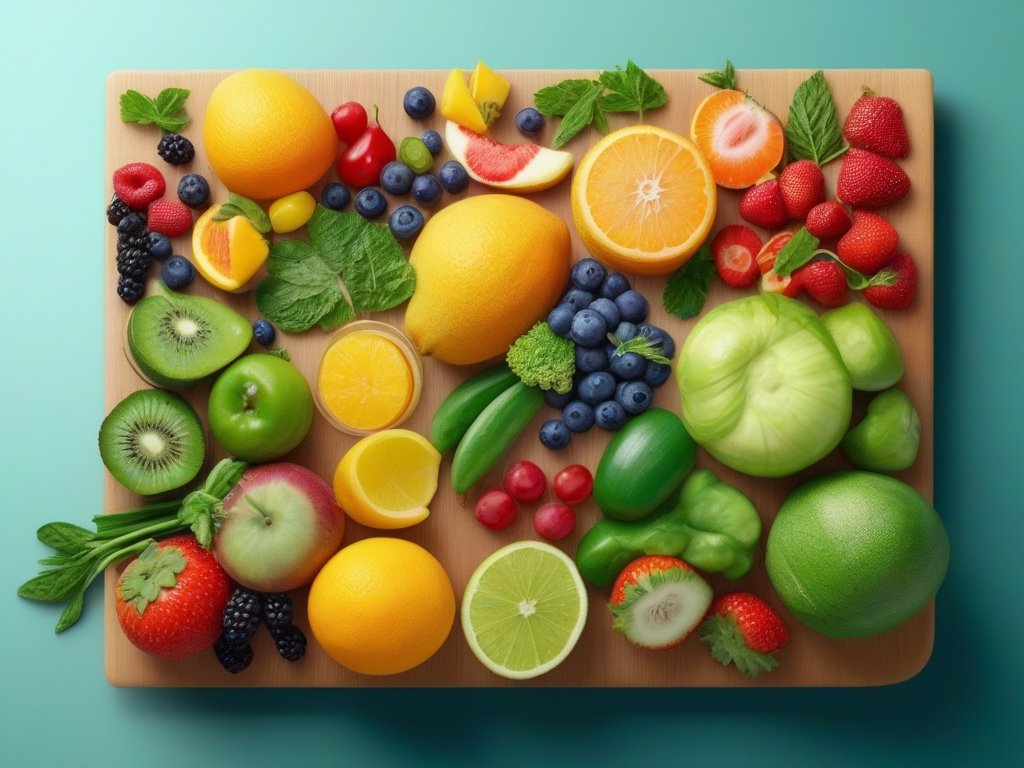What Are Yummy Healthy Snacks for Picky Eaters?
DATE : 17 August 2024 By : Tareq Qteshat

As a parent, you're constantly on the lookout for snacks that are both yummy and healthy for your picky eater. Fortunately, there are many nutritious options available. Fresh fruit snacks like dried apricots, fruit leather, and fruit kebabs are rich in fiber and antioxidants. Whole grain crackers with hummus or peanut butter make for a satisfying snack, while protein-rich options like veggie sticks with ranch dressing or edible insects provide a boost. You can also try making your own granola bars or trail mix with wholesome ingredients. With a little creativity, you'll discover a world of healthy snack options that your child will love, and there's more to explore.
Table of Contents
ToggleKey Takeaways
- Fresh fruit snacks like dried fruits, fruit leather, and fruit kebabs are nutritious and fun options for picky eaters.
- Veggie snacks like veggie face snacks, veggie sticks with hummus, and veggie kebabs can make snack time engaging and healthy.
- Whole grain crackers with hummus, guacamole, or peanut butter provide complex carbohydrates, dietary fiber, and B vitamins.
- Protein-rich snack options like edamame, hard-boiled eggs, and Greek yogurt support healthy weight management and regulate appetite.
- Homemade snacks like granola bars, yogurt-based snacks, and trail mix recipes can be customized to cater to different tastes and preferences.
Fresh Fruit Snack Ideas
When it comes to fresh fruit snack ideas, your child's taste buds don't have to suffer just because they're picky.
You can offer a variety of options that are both healthy and delicious. One idea is to try different types of dried fruits, such as dried apricots, which are rich in fiber and antioxidants.
You can also make your own dried fruit snacks at home using a food dehydrator or by placing the fruit in a low-temperature oven.
Incorporating fruits and veggies into snack recipes, Simple Healthy Meals, can increase a picky eater's repertoire of nutrition-packed food.
Additionally, being patient and persistent when introducing new foods can help your child develop healthy eating habits. If your child doesn't like dried fruit, you can try making fruit leather alternatives. These can be made by pureeing fresh fruit and then spreading it onto a baking sheet to freeze.
Once frozen, you can cut the mixture into strips and store them in an airtight container.
Another option is to make fruit kebabs using fresh fruit like grapes, strawberries, and pineapple.
This is a fun and easy way to get your child to eat more fruit. By offering a variety of fresh fruit snack ideas, you can help your child develop healthy eating habits that will last a lifetime
Veggie Snacks for Kids
Your child may not naturally gravitate towards veggie snacks, but with some creativity, you can make them more appealing.
One way to do this is by creating fun shapes and faces with veggies. Veggie face snacks can be a great way to make snack time more engaging and interactive. You can use sliced cucumbers, carrots, and cherry tomatoes to create fun faces on a plate.
Additionally, incorporating healthy ingredients into mealtime can help picky eaters develop healthy eating habits, and healthy recipes can be customized to suit different tastes and preferences. By making small changes to their diet, such as adding more fruits and vegetables, parents can encourage healthy eating habits in their children.
Some other ways to make veggie snacks more appealing to kids include:
- Serving veggie sticks with hummus or ranch dressing for dipping
- Creating a "veggie kebab" with cherry tomatoes, mushrooms, and cheese
- Making a "veggie wrap" with shredded lettuce, sliced cucumbers, and whole wheat tortilla
Whole Grain Crackers Options
Switching gears to whole grain crackers options can help introduce kids to complex carbohydrates, dietary fiber, and B vitamins, essential nutrients that may be missing in processed snacks.
When choosing whole grain crackers, you'll want to look for options that are low in added sugars, salt, and unhealthy fats. Opt for crackers made with 100% whole grains, such as oats, quinoa, or brown rice.
Incorporating whole grain crackers into your child's snack routine can help them develop healthy eating habits and a more adventurous palate, which is especially important for picky eaters.
Additionally, whole grain crackers can be a great base for healthy snacks, providing a good source of fiber and nutrients. You can make whole grain crackers more appealing to picky eaters by offering a variety of cracker toppings.
Try pairing crunchy crackers with hummus, guacamole, or peanut butter for a satisfying snack. You can also add sliced fruits or veggies, such as apples or cucumbers, for added nutrition and flavor.
Look for crackers with fun shapes and textures to keep things interesting. Some popular whole grain cracker options include rice cakes, whole wheat thins, and oat crackers
Protein Rich Snack Options
Incorporating protein-rich snack options into your child's diet can have a significant impact on their overall health and development.
Protein plays a vital role in building and repairing tissues, including muscles, bones, and skin. It also helps regulate appetite and supports healthy weight management.
Additionally, research shows that children who are exposed to a variety of flavors and textures early on are more likely to develop a diverse palate Healthy Recipes for Picky Eaters.
Moreover, incorporating healthy fats and oils, such as avocado, into snack options can provide numerous health benefits and help with the absorption of important vitamins and minerals.
When it comes to protein-rich snack options, there are many choices beyond traditional animal-based sources.
Some options you might consider include:
- Edible insects, such as crickets or mealworms, which are high in protein and micronutrients like iron and calcium. They can be roasted and seasoned for a tasty snack.
- Protein powder made from plant-based sources like pea or hemp protein. This can be mixed with milk or yogurt for a quick and easy snack.
- Hard-boiled eggs, which are a convenient and portable source of protein. They can be seasoned with herbs and spices for added flavor.
These options can be incorporated into your child's diet in a variety of ways, such as adding protein powder to smoothies or using edible insects as a topping for salads or yogurt.
Healthy Dips and Spreads
You're likely no stranger to the idea that pairing a tasty dip with crunchy veggies or fresh fruit can be a game-changer for picky eaters.
When it comes to healthy dips and spreads, you've got a range of options that can add nutrition and excitement to snack time.
Hummus and Veggie Sticks
A delicious and nutritious combination, hummus and veggie sticks make for a satisfying snack that even the pickiest of eaters can enjoy.
You can find hummus in various flavored varieties, such as classic, roasted garlic, or spicy, which can cater to different tastes. This dip is also rich in protein, fiber, and healthy fats, making it an excellent choice for a quick energy boost.
When it comes to veggie sticks, you can get creative with color mixing to make the snack more appealing.
Try combining carrots, cucumbers, and bell peppers for a colorful and crunchy snack.
Here are some tips to enhance your hummus and veggie stick experience:
- Serve store-bought or homemade hummus with a variety of veggie sticks, such as cherry tomatoes, broccoli, or cauliflower.
- Experiment with different flavored hummus varieties to find your favorite.
- Add a sprinkle of paprika or sumac to give your hummus an extra kick of flavor and nutrition.
Fresh Fruit and Yogurt
[TEXT]:
Combining fresh fruit with yogurt creates a snack that's both nutritious and delicious, perfect for picky eaters who crave something sweet and satisfying.
You can mix and match different types of fruit, such as berries, sliced bananas, or diced apples, with a variety of yogurt flavors to create a snack that's tailored to your taste preferences.
When choosing yogurt, opt for low-fat or non-fat varieties that are rich in protein and calcium.
You can also add some crunch by sprinkling granola or chopped nuts on top.
For a fun twist, try making frozen yogurt bites by mixing yogurt with honey and freezing it in an ice cube tray.
Another option is to pair yogurt with fruit leather strips, which are made from pureed fruit and are a great source of fiber and antioxidants.
[DIRECTIONS]:
Note: No changes are required in this section as it remains the same.
Nutritious Granola Bars
When you're looking for a convenient snack that's both healthy and appealing to picky eaters, consider making your own granola bars at home.
By controlling the ingredients, you can create a nutrient-dense snack that's tailored to your family's tastes and dietary needs.
Homemade granola bar options offer a range of benefits, from key ingredients like whole grains and nuts to add-ins like dried fruits and seeds that boost the nutritional value of each bar.
Homemade Granola Bar Options
How can you guarantee your picky eater gets the nutrients they need from a snack as convenient as a granola bar?
One way to guarantee this is by making your own homemade granola bars. This way, you can control the ingredients and tailor them to your child's tastes and dietary needs.
Making homemade granola bars is easier than you think, and it allows you to experiment with different granola bar variations and textures.
For example, you can add crunchy textures like nuts or seeds to provide a satisfying crunch.
- Add some dried fruit like cranberries or cherries to give your granola bars a sweet and fruity flavor
- Use different types of nut butters like peanut butter or almond butter to add creaminess and protein
- Experiment with various grains like oats, quinoa, or amaranth to add fiber and texture
Key Ingredient Benefits
By incorporating nutrient-dense ingredients into your homemade granola bars, you can create a snack that not only satisfies your picky eater's cravings but also provides a boost of essential vitamins and minerals.
One key benefit of homemade granola bars is the ability to choose ingredients that provide a concentrated dose of nutrition. Herbal extracts, such as ginseng and peppermint, can enhance cognitive function and digestive health, while superfood powders like spirulina and matcha green tea provide a rich source of antioxidants and energy-boosting compounds.
When selecting ingredients for your homemade granola bars, consider the unique nutritional benefits of each component. Nuts and seeds, for example, are rich in healthy fats and protein, while dried fruits provide a natural source of fiber and vitamins.
Whole grains, such as oats and quinoa, offer sustained energy and fiber. By combining these ingredients in a balanced ratio, you can create a snack that not only tastes great but also provides a thorough range of essential nutrients.
Nutrient-Dense Add-Ins
Several nutrient-dense add-ins can elevate your homemade granola bars from a tasty snack to a nutritious powerhouse.
By incorporating these ingredients, you can boost the nutritional value of your granola bars and provide a healthier option for picky eaters.
When it comes to adding extra nutrition to your granola bars, consider the following options:
- Seeds benefits: Chia seeds, flaxseeds, and hemp seeds are rich in omega-3 fatty acids, fiber, and protein. They can help lower cholesterol levels and provide a feeling of fullness and satisfaction.
- Nuts advantages: Almonds, walnuts, and pecans are rich in healthy fats, protein, and fiber. They can help lower cholesterol levels and provide a crunchy texture to your granola bars.
- Dried fruit benefits: Cranberries, raisins, and apricots are rich in antioxidants, fiber, and natural sweetness. They can help provide a sweet flavor without adding refined sugars.
Yogurt Based Snack Ideas
Many kids are notoriously picky eaters, but one snack that often wins them over is yogurt. You can offer it plain, but why not get creative and make it more exciting? Here are some yogurt-based snack ideas that your kids will love:
| Snack Idea | Description | Nutritional Benefits |
|---|---|---|
| Yogurt Parfait | Layer yogurt with granola, fresh berries, and a drizzle of honey | Calcium, protein, fiber, and antioxidants |
| Yogurt Pops | Mix yogurt with honey and freeze in popsicle molds | Calcium, protein, and probiotics |
| Yogurt and Banana Bites | Dip banana slices in yogurt and top with crushed nuts | Potassium, calcium, and protein |
| Yogurt and Honey Dip | Mix yogurt with honey and serve with fruit or veggie sticks | Calcium, protein, and probiotics |
These snack ideas are not only delicious, but they're also packed with nutrients that will keep your kids energized and focused. By incorporating yogurt into their diet, you'll be providing them with essential calcium and protein for growth and development. Plus, the probiotics in yogurt can help support a healthy gut. So go ahead, get creative with yogurt, and watch your kids enjoy a snack that's both yummy and healthy!
Homemade Trail Mix Recipes
Considering your kids' penchant for munching on snacks while on-the-go, you can create a convenient and healthy option with homemade trail mix recipes.
This snack is perfect for picky eaters, as you can customize the ingredients to suit their tastes. By making your own trail mix, you can avoid added preservatives and sugars found in store-bought options.
To get started, gather a variety of nuts, seeds, and dried fruits. For peanut-free alternatives, consider using sunflower seeds, pumpkin seeds, or almonds.
You can also add a sweet treat with chocolate variations, such as dark chocolate chips or carob powder.
Some healthy trail mix combinations to try:
- *Tropical Mix*: Combine dried pineapple, mango, and coconut flakes with a sprinkle of cinnamon.
- *Nutty Delight*: Mix together almonds, cashews, and pistachios with a few chocolate chips.
- *Seedling Snack*: Blend sunflower seeds, pumpkin seeds, and dried cranberries for a sweet and salty treat.
Healthy Smoothie Options
Nourishment on-the-go just got a whole lot easier with healthy smoothie options that cater to even the pickiest of eaters.
You can create a variety of blender recipes that are both delicious and nutritious. Start with a base of frozen fruit, such as berries, bananas, or mangoes, and add in some yogurt or milk for creaminess.
Then, boost the nutritional value with smoothie boosters like spinach, protein powder, or chia seeds.
Experiment with different combinations to find the perfect blend for your taste buds. For a revitalizing and invigorating smoothie, try mixing together frozen pineapple, coconut water, and a handful of spinach. Or, for a more decadent treat, blend together frozen berries, Greek yogurt, and a drizzle of honey.
Frequently Asked Questions
Can Picky Eaters Develop Taste for New Foods?
You can help picky eaters overcome food neophobia by gradually introducing new foods, leveraging taste bud development. Research shows repeated exposure to novel flavors can rewire their brains, increasing willingness to try new foods.
How Often Should Kids Snack Between Meals?
You manage your child's snack schedule with precision, just as you plan their meals. Establish a healthy snacking routine with guidelines suggesting 2-3 snacks between meals, spaced evenly to maintain energy levels and support growth.
Are Organic Snacks Better Than Non-Organic?
You weigh the pros and cons of organic snacks, considering the benefits of reduced pesticide exposure and higher nutrient content, while also acknowledging that non-organic alternatives can be just as nutritious and more budget-friendly.
Can Snacks Be Used as Meal Replacements?
When considering snacks as meal replacements, you must prioritize snack portion control to avoid overconsumption. Follow meal replacement guidelines to guarantee you're meeting nutritional needs, and choose nutrient-dense options to fuel your body effectively.
How to Get Kids Involved in Snack Preparation?
Ironically, getting kids to prep snacks can be a recipe for disaster! You empower them by introducing kid-friendly recipes and involving them in snack chart creation, teaching essential life skills and healthy habits.
Conclusion
As you navigate the world of snack time, remember that offering healthy options doesn't have to mean sacrificing flavor. In fact, research shows that involving kids in the snack-planning process can lead to healthier choices, with 65% of children reporting a willingness to try new fruits and veggies when given a say in the selection. With a little creativity and planning, even the pickiest of eaters can develop healthy snacking habits.










